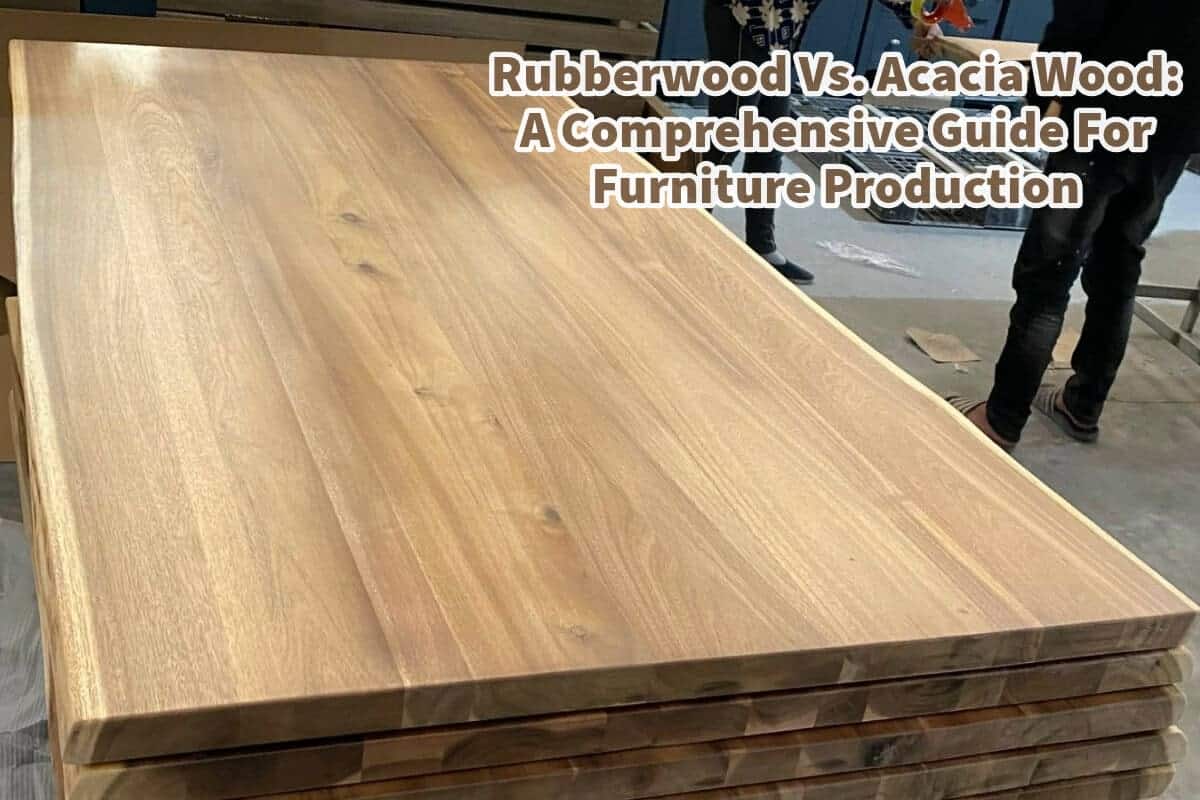At Mondoro, we manufacture furniture using rubberwood and acacia wood, allowing us to clearly understand the differences and similarities between these two types of wood. While both are hardwoods known for their durability and aesthetic appeal, they each have unique characteristics that can significantly impact your product and manufacturing decisions.
Rubberwood and Acacia wood share many qualities, such as sustainability and versatility, making them popular choices in the furniture industry. However, the differences in hardness, workability, and appearance can influence which wood is best suited for specific applications. Understanding these differences is essential for selecting the suitable material for your needs, ensuring quality and customer satisfaction.
Table of Contents
- Rubberwood Vs. Acacia Wood: An In-Depth Guide for Furniture Production
- Comparing Rubberwood And Acacia Wood
- Related Content
Rubberwood Vs. Acacia Wood: An In-Depth Guide for Furniture Production
The type of wood used in furniture production is a crucial consideration. Among the various options available, rubberwood and Acacia wood stand out as popular choices due to their durability, aesthetic appeal, and sustainability.
Both are hardwoods, which generally implies strength and longevity, but each brings unique qualities. Read on as we’ll delve into the characteristics of rubberwood and acacia wood, compare their properties, and explore why acacia wood, despite both being hardwoods, is more complicated and often more desirable for specific applications.
Understanding Rubberwood
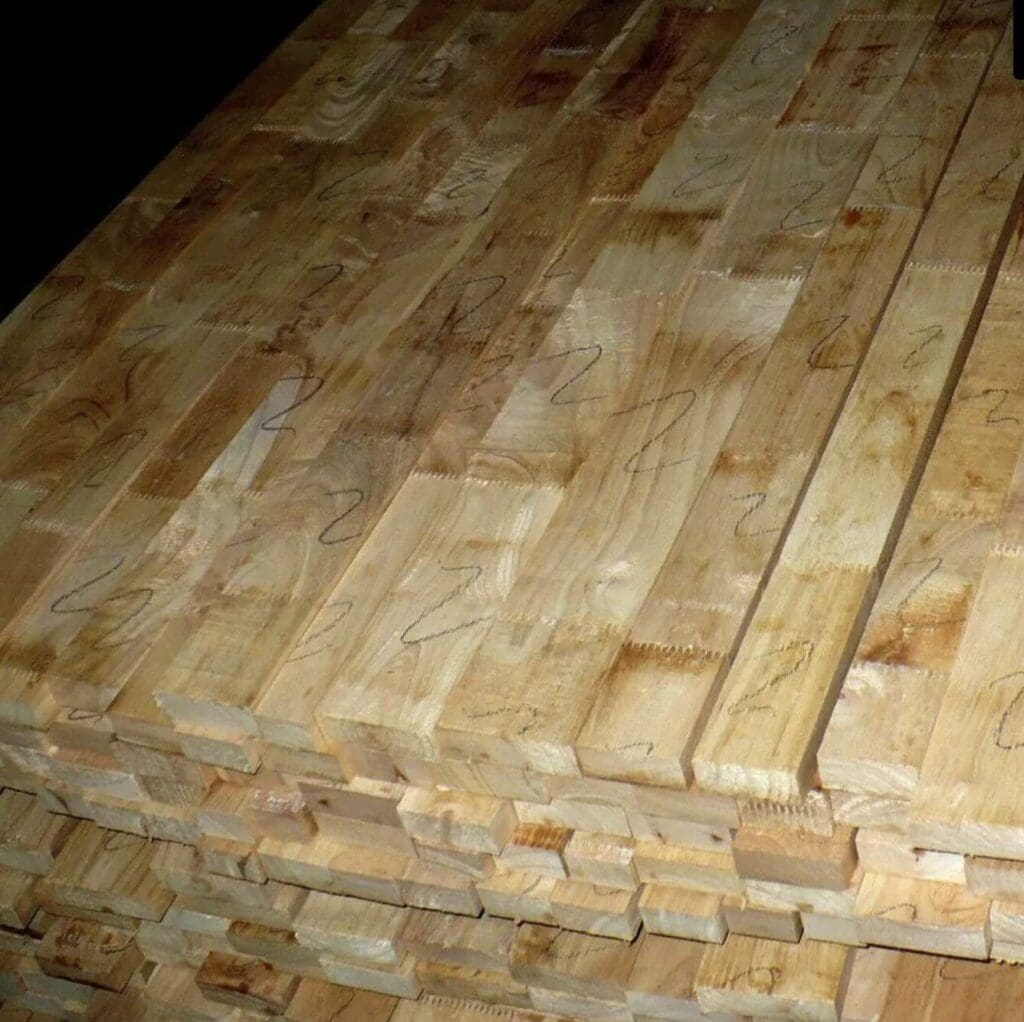
Rubberwood remains a highly favored choice for various types of manufacturing, particularly furniture production. Its durability, attractive grain, and eco-friendly nature make it appealing to manufacturers. Rubberwood’s versatility and cost-effectiveness contribute to its widespread use in creating diverse, high-quality products.

Origin And Sustainability Of Rubberwood
Rubberwood, often referred to as parawood or plantation hardwood, is derived from the Pará rubber tree (Hevea brasiliensis), which is primarily cultivated in Southeast Asia, especially in countries like Thailand and Malaysia.
Grown initially for latex production, these trees are harvested for their wood once they stop producing latex, usually after about 25-30 years. This dual-purpose use makes rubberwood an environmentally friendly choice as it utilizes trees that would otherwise be discarded.

Characteristics Of Rubberwood
Rubberwood boasts several essential characteristics that make it an excellent choice for furniture production. Its durability, attractive grain, and sustainable nature provide aesthetic and practical benefits. Rubberwood’s affordability and versatility further enhance its appeal for creating high-quality, eco-friendly furniture.
Here are some of the main characteristics of Rubberwood:
- Appearance: Rubberwood is light, almost pale, and has a subtle grain pattern, making it a versatile choice that can be stained or painted to match various interior designs.
- Workability: It is easy to work with, accepting nails, screws, and adhesives well. It also responds well to staining and finishing.
- Durability: While durable, rubberwood is not as hard as some other hardwoods, making it susceptible to dents and scratches.
- Sustainability: Its use helps reduce rubber industry waste, making it a sustainable choice.
Understanding Acacia Wood
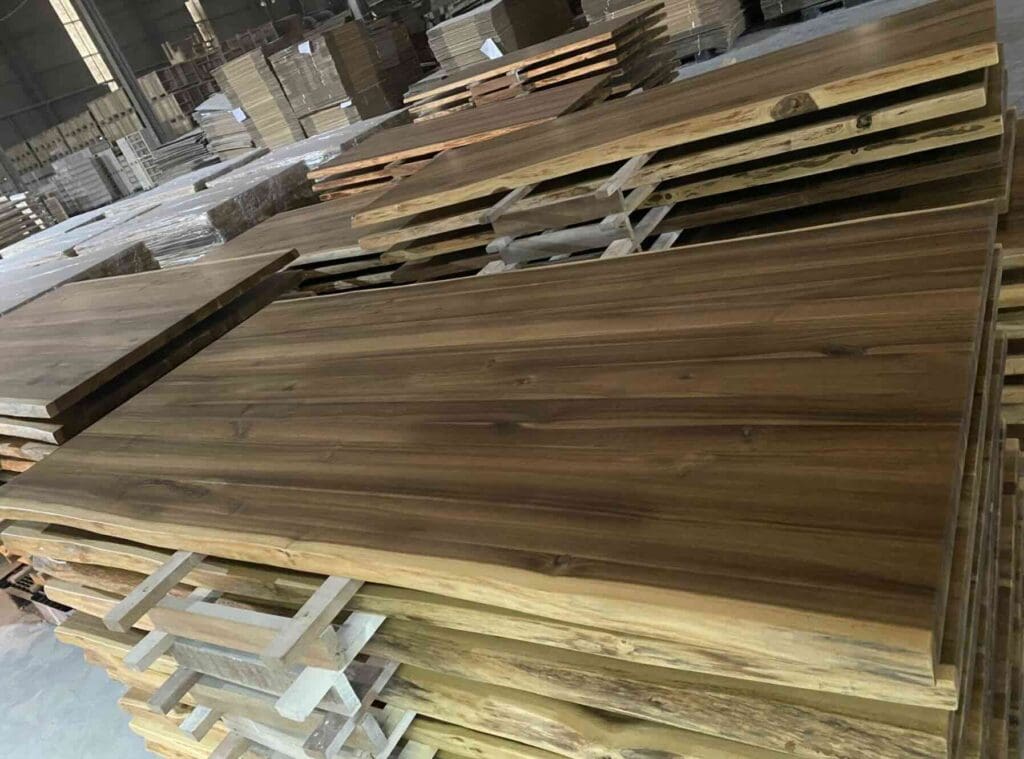
Acacia wood is a popular and significant choice for various types of production, particularly in furniture manufacturing. Known for its durability, rich grain, and natural resistance to wear and decay, acacia wood is favored for creating high-quality, aesthetically pleasing furniture. Its versatility and strength also make it a valuable material in numerous other applications.
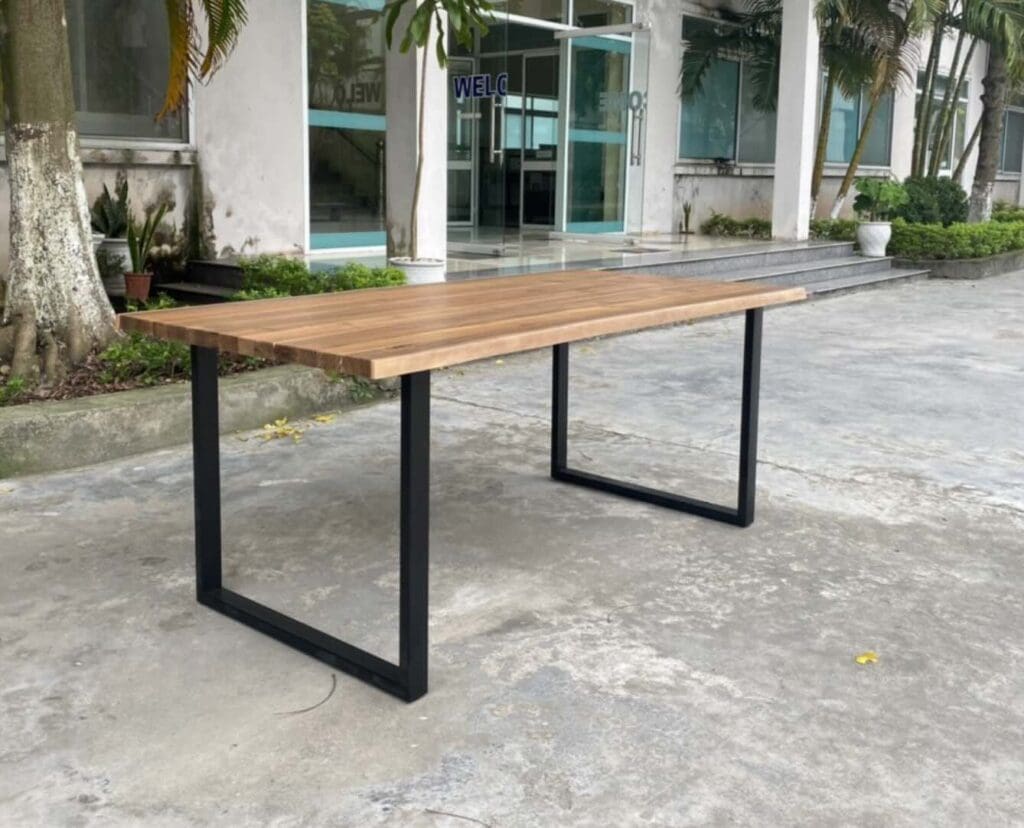
Origin And Sustainability Of Acacia Wood
Acacia wood comes from the acacia tree, a fast-growing species in many parts of the world, including Australia, Africa, and Asia. Acacia trees are highly adaptable, growing quickly and efficiently, which makes them a sustainable resource.
The wood is often harvested from managed plantations, ensuring the environmental impact is minimized.
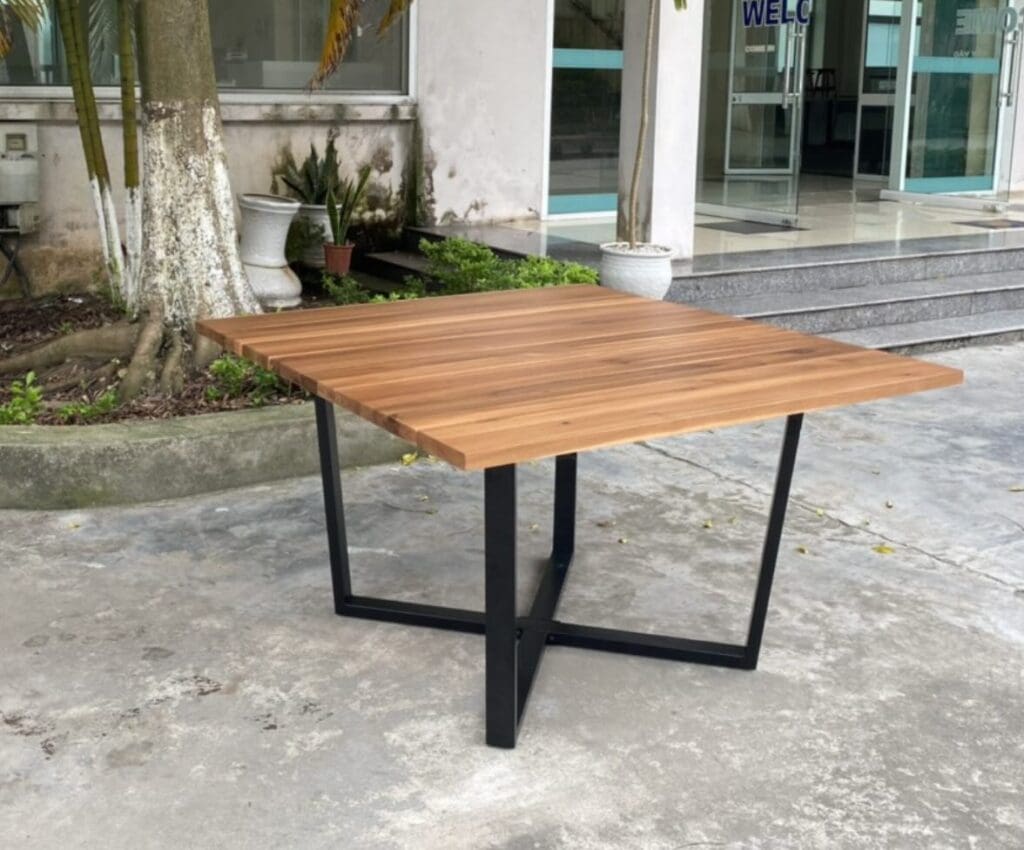
Characteristics Of Acacia Wood
Acacia wood is highly prized for its exceptional qualities, which make it an excellent choice for various applications. One of its most notable characteristics is its durability and hardness, which allow it to withstand heavy use and resist scratches, making it ideal for furniture and flooring.
Acacia wood also has a rich, warm appearance with a natural grain that adds aesthetic appeal to any project. Its resistance to water and decay further enhances its suitability for indoor and outdoor use.
Here are some of the main characteristics of Acacia wood:
- Appearance: Acacia wood boasts a rich, warm color, ranging from light amber to dark brown, with distinctive grain patterns that add to its aesthetic appeal.
- Workability: While it is harder to work with than rubberwood, it can be crafted into beautiful furniture with the right tools and expertise.
- Durability: Acacia wood is tough and dense, making it resistant to scratches, dents, and wear. This hardness contributes to its longevity and suitability for high-traffic areas.
- Sustainability: Its rapid growth rate and widespread availability contribute to its sustainability, with many suppliers ensuring that Acacia is harvested responsibly.
Comparing Rubberwood And Acacia Wood
Rubberwood and Acacia wood are excellent choices for making furniture and home decor items, each offering unique benefits.
Acacia wood is renowned for its hardness, making it a superior option for products requiring extra durability and wear and tear resistance. This characteristic makes Acacia particularly suitable for high-use furniture pieces, such as dining tables and chairs, where its ability to withstand scratches and dents is highly valued. In contrast,
While slightly softer, rubberwood is still a strong and versatile material known for its smooth finish and affordability. Its eco-friendliness, stemming from being a byproduct of the rubber industry, also makes it a popular choice among environmentally conscious consumers.
Depending on the specific production requirements and desired attributes, either wood can be an excellent choice. Acacia is often favored for more demanding applications due to its superior hardness. Read on as we explain some significant differences between Rubberwood and Acacia wood.
Hardness And Durability
One critical difference between rubberwood and acacia wood is their hardness. Acacia wood is significantly more complicated than rubberwood, which translates to better wear and damage resistance.
The Janka hardness test, which measures wood’s resistance to denting and wear, shows acacia wood with a higher rating than rubberwood. This makes Acacia a preferable choice for furniture pieces that need to withstand heavy use, such as dining tables and chairs.
Aesthetic Appeal
Both rubberwood and Acacia wood have unique aesthetic qualities. Rubberwood’s light color and subtle grain pattern make it versatile for various finishes, blending seamlessly with different decor styles.
In contrast, acacia wood’s rich hues and striking grain patterns make it a standout choice for those seeking to add a touch of natural beauty and warmth to their spaces.
Workability And Versatility
Rubberwood’s softer nature makes it easier to work with, particularly for intricate designs and detailed craftsmanship. It is also more forgiving when cutting, sanding, and shaping. Acacia wood, being more complex, requires more effort and more robust tools, resulting in incredibly sturdy and long-lasting pieces.
Cost And Availability
Rubberwood is generally more affordable than acacia wood, partly due to its widespread use and availability from latex-producing plantations. Acacia wood, while often more expensive, offers superior hardness and durability, which can justify the higher price for many consumers.
Environmental Impact
Both rubberwood and Acacia wood are considered sustainable options. Rubberwood uses trees that have already served their primary purpose, reducing waste. With its fast growth rate and efficient harvesting practices, Acacia wood also represents a renewable resource.
Choosing either wood contributes to sustainable forestry practices and responsible resource management.
At Mondoro, we produce furniture using Rubberwood and Acacia wood, offering versatile options to meet various needs. Our Acacia wood is particularly noteworthy for its environmental credentials, as it is certified by FSC or KNS, ensuring sustainable sourcing. Both types of wood are excellent choices for production, each providing unique benefits for different applications.
In the realm of furniture production, both Rubberwood and Acacia offer excellent qualities that make them suitable for a variety of applications. Rubberwood, with its affordability, ease of work, and sustainability, is an excellent choice for a wide range of furniture pieces, especially those that don’t require the utmost hardness. Acacia wood, on the other hand, stands out for its exceptional hardness, durability, and rich aesthetic appeal, making it ideal for high-traffic furniture and statement pieces.
Ultimately, the choice between rubberwood and acacia wood will depend on the consumer’s specific needs and preferences. Whether it’s the cost-effectiveness and versatility of rubberwood or the superior durability and beauty of acacia wood, both options provide valuable solutions for creating quality, sustainable furniture.
If you are interested in seeing how Mondoro can be a valuable partner for you for wood furniture products – we would love to talk to you to see how we can help you.
Find out more about how Mondoro can help you create, develop, and manufacture excellent home decor and furniture products – don’t hesitate to contact me, Anita. Check out my email by clicking here or become a part of our community and join our newsletter by clicking here.
Mondoro gives out a FREE Lookbook to anyone interested. You can receive a copy of our latest Lookbook by clicking here.
Listen to our Podcast called Global Trade Gal. You can find it on all major podcast platforms. Try out listening to one of our podcasts by clicking here.
Subscribe to our Mondoro Company Limited YouTube Channel filled with great videos and information by clicking here.
Related Content
Difference Between Solid Sheesham Wood, And Teak Wood
Solid Sheesham Wood and Teak Wood are both very different kinds of woods. Even though they are both considered hardwoods, Sheesham wood is softer than teak. Sheesham wood is also considered less durable than teak wood. Many premier manufacturers consider teak wood the ”king of woods.”
You can discover more by reading Difference Between Solid Sheesham Wood, And Teak Wood by clicking here.
Is Teak a Coniferous, Evergreen, or Deciduous Tree? 11 Teak Wood Facts
Teak is a deciduous, not evergreen or coniferous tree. Teak leaves do not fall off in the wintertime, but they fall off in the dry season; in Asia, where teak trees are naturally grown, the dry season is not always the same as winter. As the teak leaves do fall off, the tree is considered to be a deciduous tree.
You can discover more by reading our blog Is Teak a Coniferous, Evergreen, or Deciduous Tree? 11 Teak Wood Facts by clicking here.
What Are The Types Of Wood Used In Furniture?
Wood for furniture is divided up into hard and softwood. Though the woods have some similarities, they also have some differences. Different looks and types of furniture may require a certain kind of wood. Some wood species will be higher priced, and others will be cheaper; price, durability, look, color, finish, and structure can decide what wood to choose for your furniture piece.
You can discover more by reading our blog What Are The Types Of Wood Used In Furniture? by clicking here.

